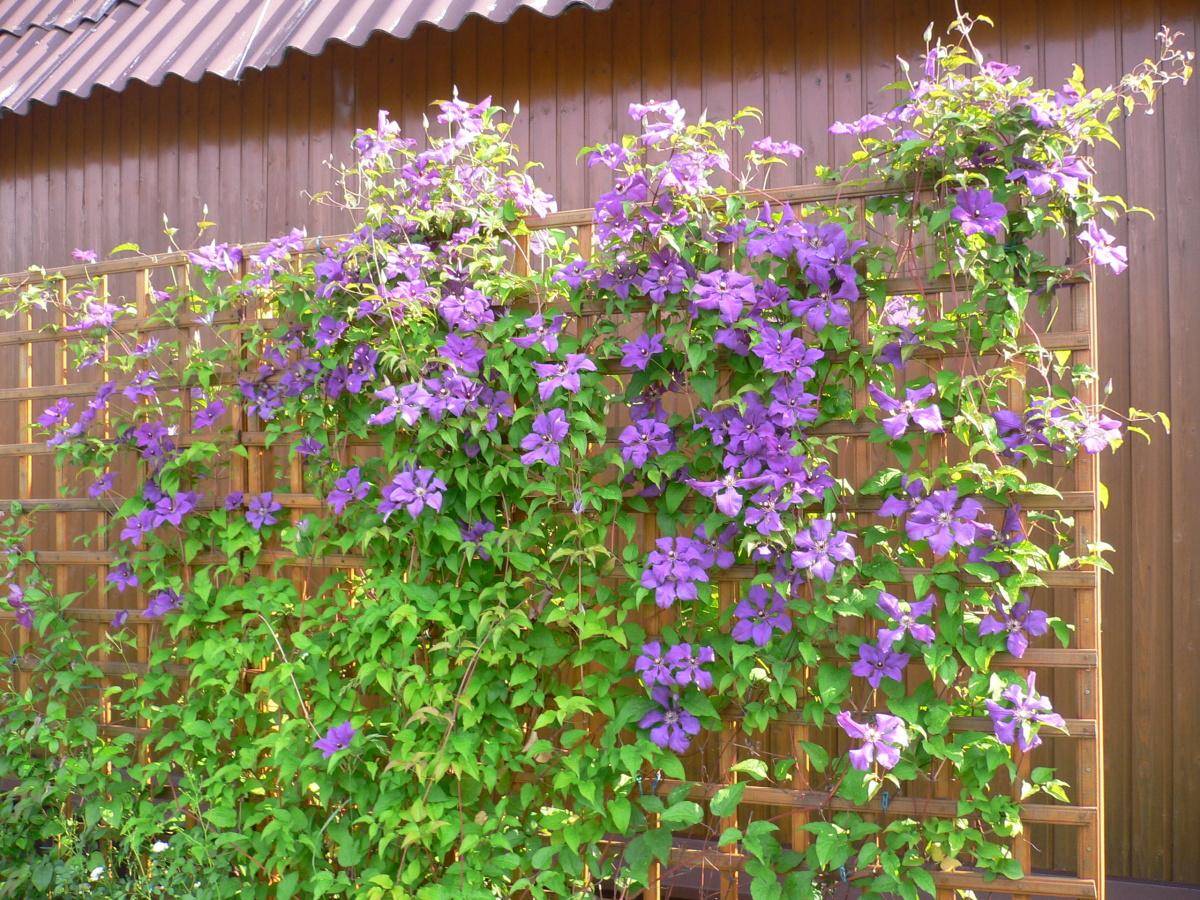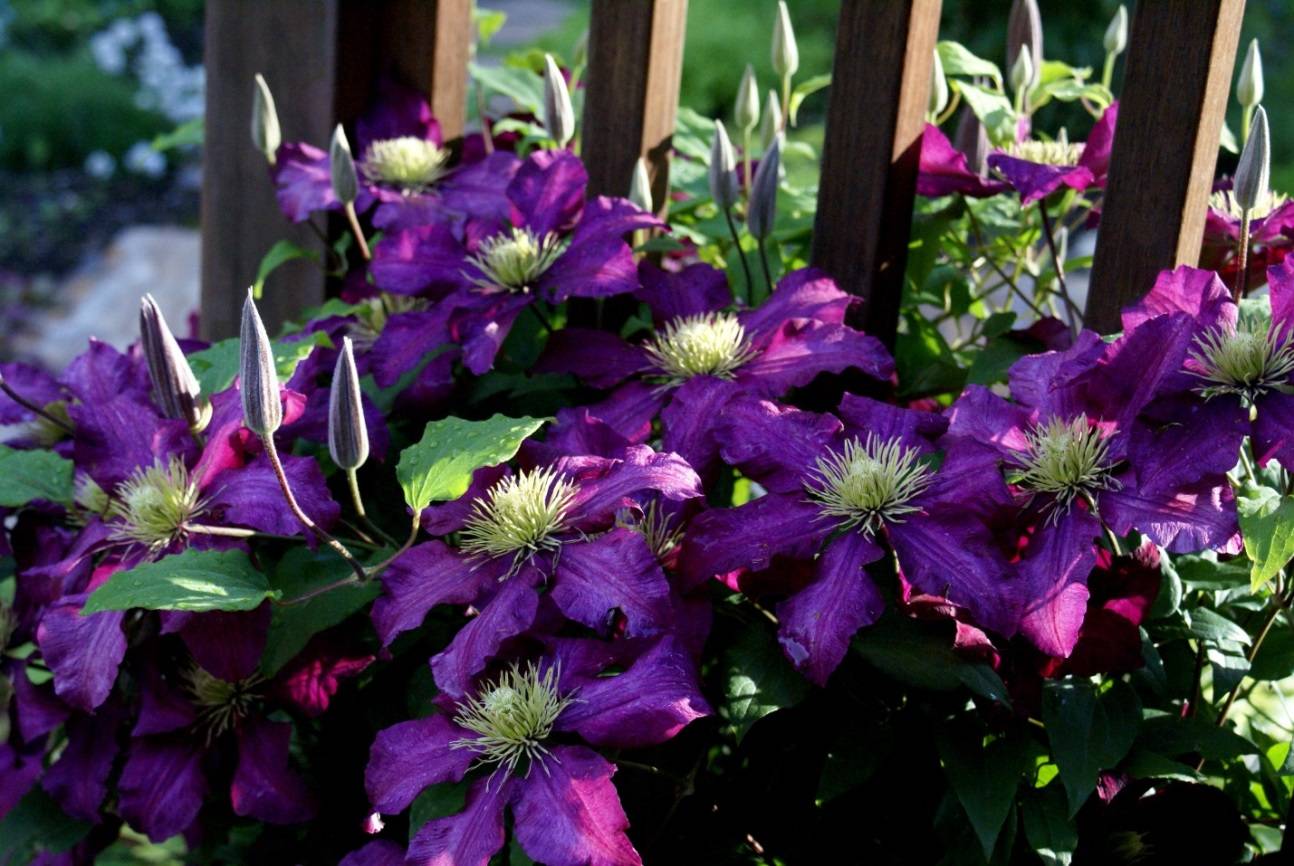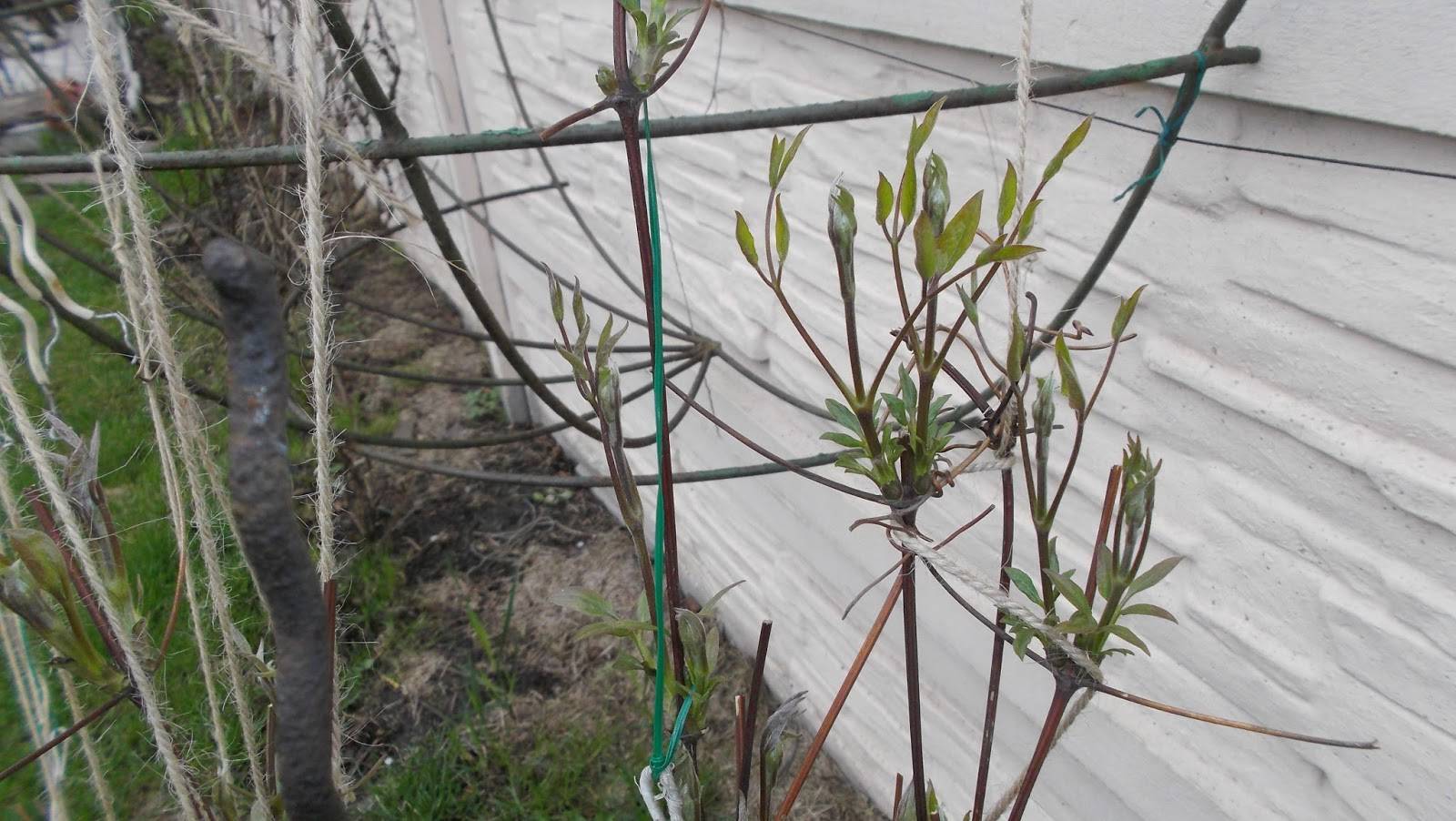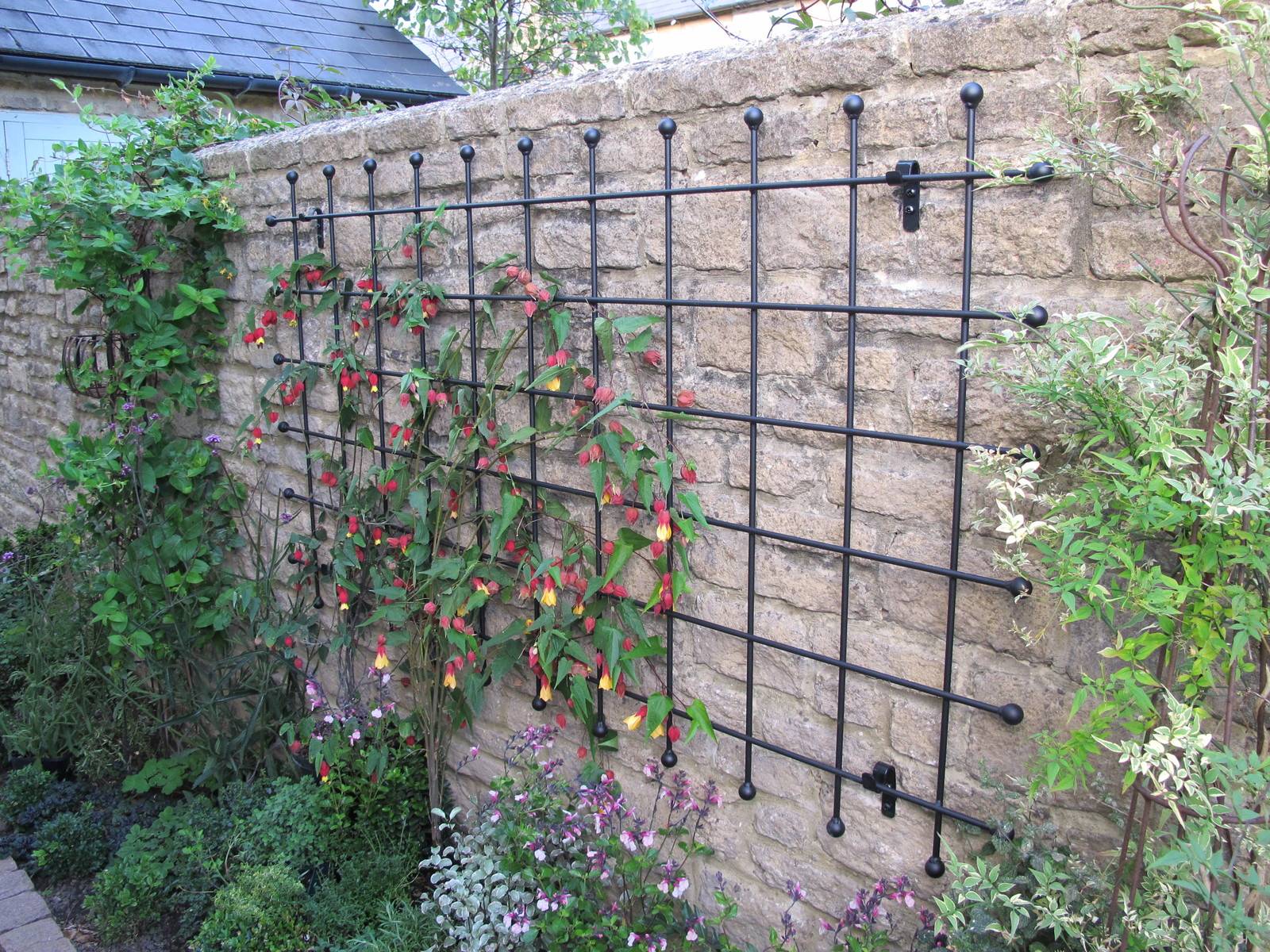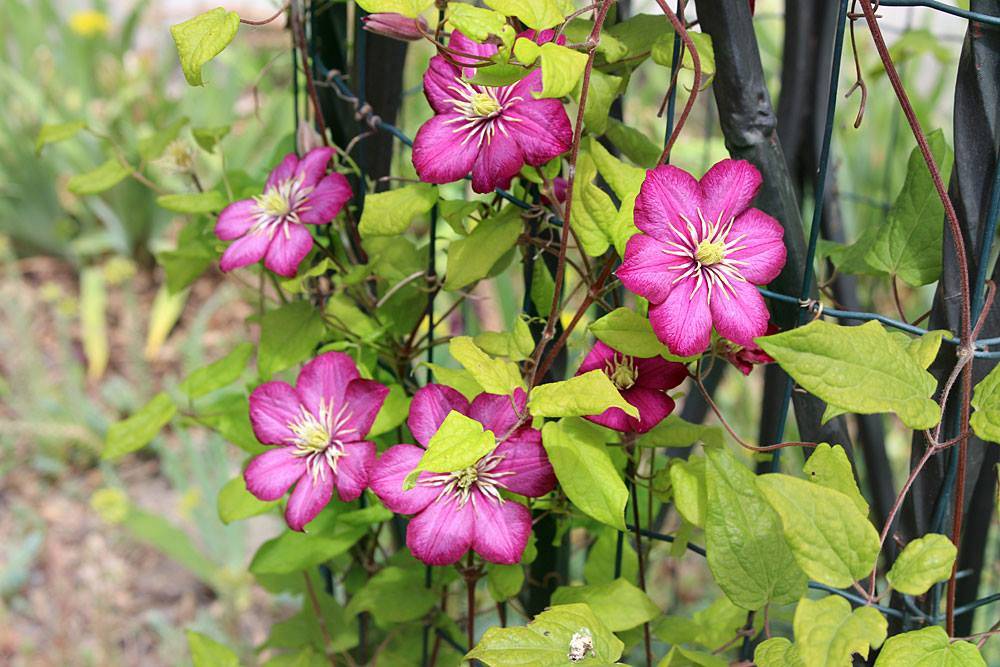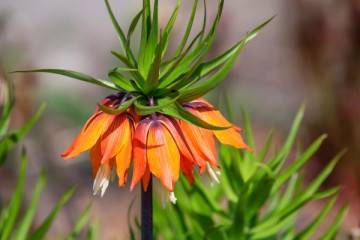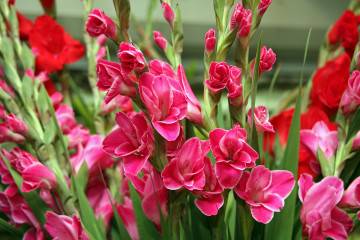Transplanting clematis to another place in the fall, spring or summer
Content:
In the garden, clematis, like other flowers, always have a special place. Their unusual tropical beauty is mesmerizing, although it does not take too much effort to maintain it. Sometimes these plants need a transplant, which must be performed following certain rules.
Transplant of clematis
If the originally allocated space does not meet the needs of the plant or the conditions (lighting, soil type, etc.) are not suitable for it, then a transplant should be performed.
Reasons and features of the change of location
A decorative liana is capable of pleasing the eye in the same place for up to 25 years. To do this, she will need a lot of sun, fertile soil and regular watering.
Among the reasons for which a transplant is required, it is worth highlighting the following:
- The inevitable depletion of the soil when even fertilization is insufficient.
- The bush has grown too much and needs to be divided into parts in order to plant.
- Nearby bushes and trees have sprung up and created shading.
- Redevelopment of the site is being carried out, because of which the plants change their places.
- Neighboring plants are affected by dangerous diseases that cannot be cured.
When to transplant clematis: in autumn or spring
The time for carrying out work on the transplantation of adult clematis is chosen based on several factors. This can be done almost at any time of the year, but it will take a different amount of work to restore the root system.
The best time to transplant in any climatic zone is early autumn. In this case, the roots have a long enough period for recovery until stable frosts come. The exact time is determined depending on the climate of a particular region, as well as the age and condition of clematis.
If we are talking about a seedling with a closed root system (in a container), then it can be planted in open ground from May to September. Instances with an open root system are planted in the first decade of September, but in regions with a short summer - in the second half of August.
Transplanting clematis in the summer to another place
In summer - in June and July, when clematis begins to actively bloom and grow shoots, it is not recommended to carry out work on transplanting adult plants. The consequences are too negative and can lead to the death of the flower.
Summer transplant pitfalls
Sensitive roots are inevitably damaged when removed from the soil in summer. Such numerous injuries are "gates" for all kinds of infections and pests.Therefore, a transplant in the summer is carried out only in case of a hopeless situation, and the bush is treated with fungicides several times.
When can I transplant clematis to another place
Strong roots of clematis grow horizontally and go deeper into the ground. When removed from the soil, numerous breaks occur. In a new place, the bush will recover for at least 2 years after the stress suffered until it returns to its previous state.
Transplant terms in autumn and spring in Siberia
Since in Siberia, autumn can come quite suddenly along with frosts, it is safer to plant clematis in the spring. Throughout the summer, the plant will grow roots, which will allow it to overwinter painlessly. If a transplant is required, then it is performed in August, when the day has already begun to decrease, but the cold has not yet come.
Transplanting clematis in spring
Spring replanting is used in those regions where the climate is temperate or characterized by very short summers. It happens that autumn frosts occur much earlier than it follows from statistical reports. After planting, it takes about 30-45 days for the bush to heal damaged roots. For areas of central Russia, the first half of April is considered the optimal time for planting clematis.
In Siberia and the Urals, it is not worth starting work earlier than the end of April or even the first ten days of May. The soil should dry out from melt water, and the air temperature during the day should be within + 6-8 ° С. Growth buds are still dormant at this time, so the transplant is most painless. Over the summer, all the shoots will have time to ripen, as well as the buds of the next season to form.
Transplanting clematis in the Moscow region
In spring and autumn, clematis can be transplanted with equal success in the Moscow region. The exact time is determined by the weather, as well as depending on the type of planting material - with a closed or open root system. Seedlings in containers are planted later, when the weather is warm. And plants with open roots are best planted early, before dormant buds wake up.
In the fall, you can schedule the first decade of September for work. It is not worth delaying, since by the end of the month clematis should have time to take root. But in this case, he is provided with a shelter to prevent freezing.
When to transplant clematis in the southern regions of Russia
In the Krasnodar and Stavropol Territories, spring comes early, the soil already warms up enough in mid-April to plant shrubs and perennial flowers. Autumn also comes late, so the permissible terms for transplanting clematis are shifted until the end of October, since there may be no frost in November either.
Transplanting an adult plant in the fall
In all regions with a subtropical climate, clematis can be planted in all autumn months. Even when planted at the end of October, at least 1.5 months remain before the onset of stable cold weather. The advantage of this particular time for buying and planting clematis is that these specimens will be able to drive out the buds and bloom next summer, regardless of the variety.
How is the transplant of an adult plant
If there is a clematis bush over 2 years old on the site, then the procedure for transplanting it will be as follows:
- All shoots are cut at a level of 10 cm from the ground level, leaving only 1-2 buds per shoot.
- The bush is dug, stepping back in a circle from the base of the stems by 50 cm.
- The root ball is removed by chopping off its ends with a shovel.
- The roots are spilled with a fungicide solution.
- The bush is transferred to a new place, where it is lowered into a pre-prepared planting pit and covered with prepared soil mixture.
How to transplant clematis
You will not be able to transplant at one time.It is required to prepare the planting site, soil, as well as the plants themselves.
Necessary instruments for transplant
For work you will need:
- a shovel with a sharp edge that allows you to chop off the roots;
- rake for loosening the soil;
- a bucket of 10-12 liters for water and mixing of soil mixture;
- mittens.
Choosing a place for garden clematis
The flower loves watering, but stagnation of moisture at the roots negatively affects growth and development. Clematis are not planted in lowlands and near places where sewage and melt water can accumulate. The groundwater level should be lower than the roots reach.
Likewise, the plant suffers from strong winds even on a reliable support. Tapestries are placed against the walls of houses on the opposite side of the prevailing wind direction. Clematis prefers loamy soil, rich in humus, loose.
Pit preparation
Planting holes are dug, focusing on the age of clematis. Saplings 2-3 years old will require 70x70 cm holes, and older ones - 90x90 cm and the same depth. A layer of 10-15 cm of fine expanded clay, broken brick or small pebbles is poured onto the bottom. Then a small mound is poured in the center, on top of which the roots of the bush will be spread.
Preparation of soil mixture
The soil removed from the planting pit is mixed with loosening and nutritive additives. It will take about 2.5 kg of humus, 1.5 kg of peat, 100 g of dolomite flour, 50 g of superphosphate, 100 g of complex mineral fertilizer. For looseness, you can add a little sand, vermiculite, wood ash.
Step-by-step planting instructions
Regardless of whether we are talking about the initial planting of young seedlings, or about replanting old bushes, the order of work will be as follows:
- A bucket of water is poured into the planting pit and wait 1 day.
- The dug clematis is buried 5 cm in the planting hole so that the growth point is slightly below ground level. Bushes older than 3 years deepen more deeply (15 cm). If required, the dug out bush is immediately divided into several parts, cutting the roots with a shovel.
- The pit is filled with prepared soil mixture.
- Watering.
- Sprinkle the root collar with river sand.
How to care for clematis after transplant
After the completion of transplantation, the plant should be provided with regular care:
- Watering. The signal that clematis is thirsty is a sluggish foliage turgor. In the heat, watering is required 2-3 times a week, while 10 liters are poured under one plant, and 20 liters are poured under bushes older than 3 years.
- Mulching. Vegetation is the best solution to protect the roots from overheating in summer. But in the absence of suitable plants, mulch is used, scattering it around the bush in a layer 5-7 cm thick. As it mixes with the soil, bark, peat, and small sawdust are periodically poured in.
- Top dressing. In the first 2 years after transplanting, with the correct preparation of the soil mixture, fertilizers can be completely abandoned. In the future, during the season, it will be necessary to carry out at least 3 dressings with complex mineral fertilizer.
- Garter. Not all varieties can twine around the supports on their own, some need help by guiding the whips.
- Pruning. It is performed according to the recommendations for a particular variety.
Transplanting adult clematis is not a very difficult event, with which it is better not to delay if there are good reasons for this. An oppressed plant will not be able to demonstrate its beauty in adverse conditions.
